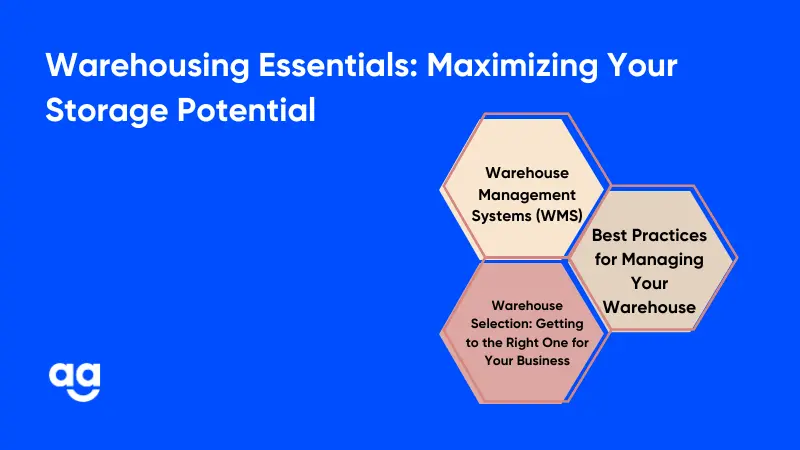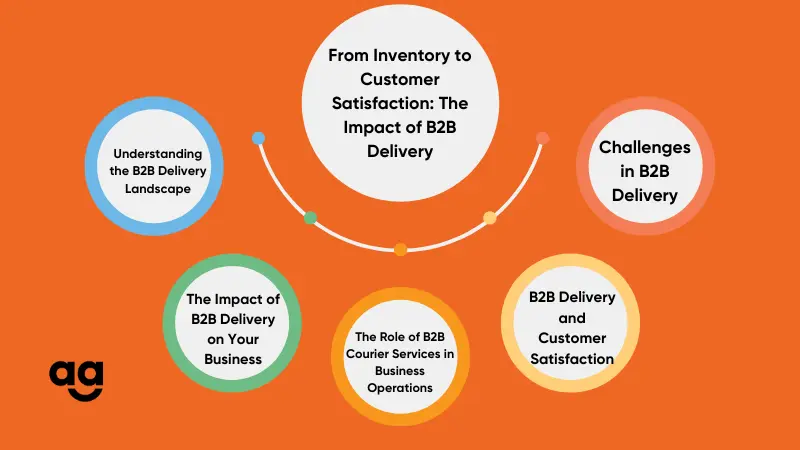Planning Pays Off: 5 Strategies to Get the Most Out of Your Delivery Speed Choice
August 19, 2024
5 min read
Introduction
Today, in the global market environment, the function of managing warehouses is considered to be one of the most important factors that define the success of any company.
Secondly, the findings that pointed out turnover losses due to mismanagement of storage might range from 20% to 30% of the entire year, suggesting that there is a need to enhance the efficiency of stock management within an organization.
The below guide will equip you with the right information concerning warehousing solutions and optimization.

A General Overview of Warehousing
Warehousing goes beyond the process of storage of goods. It is a pretty large field that covers inventory keeping, order processing, and distribution processes. Thus, an effective warehouse plays a major role in increasing the efficiency of the supply chain and the satisfaction of customers.
Key components of warehousing include:
- Receiving
- Storage
- Picking
- Packing
- Shipping
Warehouse Management Systems (WMS)
A Warehouse Management System is an effective system that improves the management of warehouses within any company or firm. This wonderful solution delivers immediate visibility into inventory stock, order status, and visitor numbers to the warehouses.
Implementing a WMS can yield significant benefits:
- Increased productivity: WMS can boost warehouse efficiency by up to 25%
- Enhanced inventory accuracy: Real-time tracking reduces errors and stockouts
- Optimized space utilization: Intelligent storage suggestions maximize warehouse capacity
- Improved order fulfillment: Streamlined picking processes reduce errors and speed up shipping
- Better labor management: Task automation and performance tracking increase workforce productivity
When a user decides to adopt a specific WMS, some aspects that may be considered include the possibility of expanding the WMS as demand increases, compatibility of the WMS with already existing systems and structures, and some of the functions that may be beneficial and necessary for the user.
Warehouse Selection: Getting to the Right One for Your Business
The selection of a proper warehouse is one of the critical strategic factors that may affect the firm’s performance. When struggling to find a “warehouse near me,” certain peculiarities must be considered in order to get the right warehouse.
Key considerations for warehouse selection include:
- Location: Proximity to suppliers, customers, and transportation hubs
- Size and layout: Adequate space for current inventory and future growth
- Features: Loading docks, climate control systems, security measures
- Cost: Lease terms, operational expenses, and potential hidden costs
- Flexibility: Firm adaptability to announce changes in production due to seasonal changes or expansion.
It is, however, important to understand that the right “warehouse near me” should be one that will meet the current and emerging uses that the business will have in the future.
Best Practices for Managing Your Warehouse
Warehouse management is not as simple as it may be viewed to entail mere storage of goods. It involves deploying effective measures in designing all other activities that take place in a warehouse. Here are some best practices to enhance your warehousing efficiency:
- Implement an efficient layout: While selecting the design of the warehouse plan, it is crucial to minimize the distances to be traveled while at the same making the most out of the available space
- Use appropriate storage solutions: Choose the right mix of pallet racking, shelving, and automated systems for your inventory types.
- Optimize picking routes: Use data-driven strategies to create efficient picking paths, reducing travel time by up to 40%
- Regularly train staff: Invest in continuous training on safety protocols, equipment operation, and efficiency techniques
- Conduct regular inventory audits: Perform cycle counts to maintain accuracy and identify discrepancies promptly.
- Leverage technology: Implement barcode systems, RFID, or IoT devices for improved tracking and visibility
- Monitor and analyze KPIs: For the quantitative performance parameters, the order accuracy, time is taken to pick the items and stock turnover must be analyzed to identify areas for improvement.
Therefore, the correct application of these techniques will assist you in achieving higher warehouse performance and business success.
Conclusion
The warehousing industry is very fluid, which simply means that it is constantly evolving. Especially in current times with large e-business players such as Amazon warehousing, firms cannot afford to be rigid.
Today, the warehouse sector is highly competitive, but one can excel in this field by improving storage equipment and incorporating technology into the facility.
Optimize your logistics with Shipyaari’s warehouse solution. Manage shipments, track orders, and communicate with customers effortlessly. Experience AI-enabled carrier selection and seamless e-commerce integrations. Sign up to elevate your shipping process today!
Frequently Asked Questions
Warehousing refers to a careful and proper manner of storage, handling, and even issuance of goods, while storage may refer to placing an object in a certain place or area.
Install a WMS, make proper layout changes, train the employees, and use the right materials for storing goods.
Cross-docking is another technique used at the heart of logistics. In this technique, products are quickly transferred from delivery trucks to loading trucks, with possibly the least time spent in storage.
Some of the areas that should be considered include the size of the business, the amount of money required to acquire WMS, the requirements of the specific company, and the scalability of the WMS
Suggested Reads
Hyperlocal Personalization: Tailoring Experiences for Local Customers
Introduction The eCommerce industry in India has witnessed a rapid growth of hyperlocal services in
Continue ReadingDec



















 Shipping
Shipping







